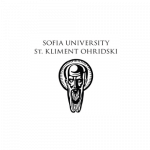New Partners
To consolidate the NetFlot network several flotation-related partners from European’s leading research institutes, universities and industry were integrated as new partners.
-
System component modelling & experiment
µm-Analysis
-
Fluid dynamics modelling & experiment
Lab experiment
-
Floatation cell modelling & experiment
Pilot plant
-
Circuit modelling & experiment
Industrial application

Turboflotservice
Partner Type: Research
Area of Expertise: Experiment
Scale: Industrial Application | Lab Experiment | Pilot Plant
Country: Ukraine

Sofia University
Partner Type: Research
Area of Expertise: Experiment | Modelling
Scale: Lab Experiment | Micrometer Scale
Country: Bulgaria

Imperial College London
Partner Type: Research | University
Area of Expertise: Experiment | Modelling
Scale: Industrial Application | Lab Experiment | Micrometer Scale
Country: Great Britain

